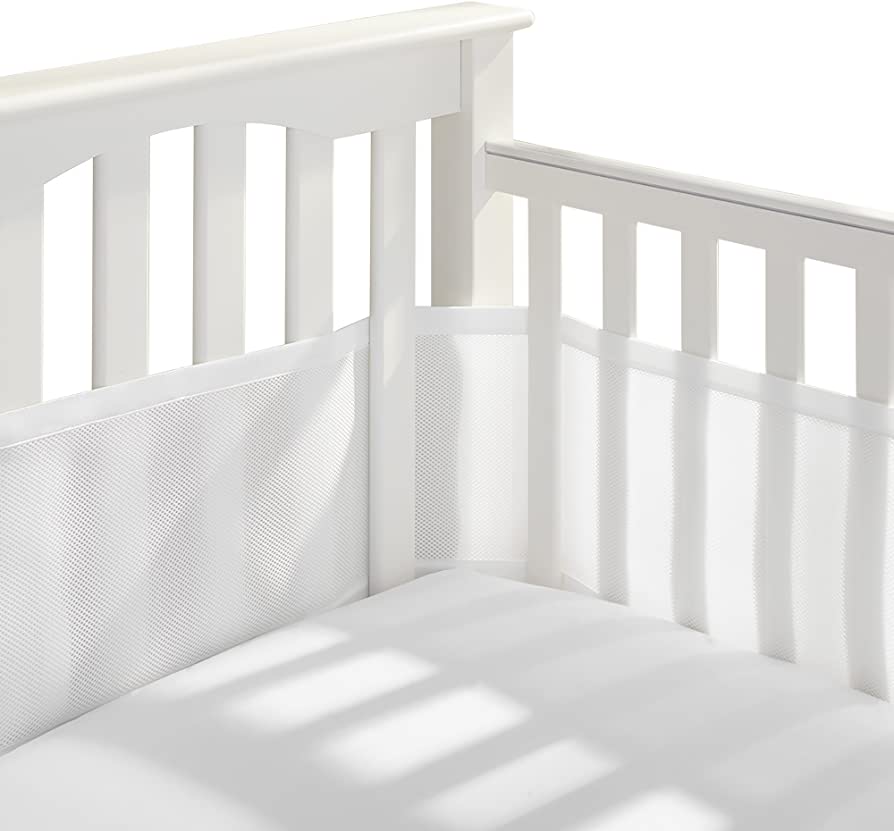Safe and Secure: The Importance of a Safe Baby Cribs With Solid Sides for Your Baby’s Sleep
A safe baby crib has solid sides with no gaps or openings. The mattress should fit snugly inside the crib so that your baby cannot slip between the mattress and the side of the crib.
There should be no more than a two-finger width space between the mattress and side of the crib.
The slats on the side of the crib should be less than 2 3/8 inches apart so that your baby’s head cannot get stuck between them.
As a parent, one of your top priorities is keeping your baby safe.
When it comes to choosing a crib, you want to make sure you choose one with solid sides.
This will help prevent your baby from falling out and getting injured.
There are a lot of different styles of cribs on the market, but not all of them have solid sides.
Some have mesh sides, which can be dangerous if your baby happens to fall out. So, when you’re shopping for a crib, be sure to look for one with solid sides.
It’s worth the extra money to know that your baby is safe and sound in his or her own bed.
Crib With 3 Solid Sides
Assuming you would like a blog post discussing the benefits of a crib with three solid sides:
When it comes to creating a safe and comfortable space for your baby to sleep, there are many factors to consider.
One important decision is whether to choose a crib with three solid sides or one with an open design.
While both have their advantages, a crib with three solid sides can offer some distinct benefits.
One big advantage of having three solid sides on your crib is that it can help contain your baby in their sleeping area.
This can be especially helpful if you have an active infant who likes to move around while they sleep.
The added barrier can also provide a sense of security for your little one, which can lead to more restful sleep.
Another benefit of this type of crib is that it often comes equipped with storage options, such as shelves or drawers built into the side panels.
This extra storage space can be very convenient for storing things like diapers, wipes, and other essentials close at hand.
It can also be helpful in keeping your nursery organized and tidy.
Crib With Solid Back vs Slats
When it comes to choosing a crib for your little one, you have two main options:
a crib with solid back or one with slats. Both have their pros and cons, so it’s important to weigh your options before making a decision.
A crib with a solid back is more supportive and can help prevent your baby from rolling out of the crib.
It’s also good for babies who are teething, as they can’t bite through the solid back. However, these types of cribs can be more expensive and difficult to find.
Cribs with slats are less expensive and easier to find, but they don’t offer as much support.
They also tend to be cooler in the summer, which can be nice for babies who get overheated easily.
But if your baby is a heavy chewer, the slats could present a choking hazard.
There is no right or wrong answer when it comes to choosing between a solid back crib and a slatted crib; it’s just a matter of personal preference.
If you’re unsure which type of crib would be best for your family, ask your pediatrician for advice.
Cribs Without Slats
If you are considering purchasing a crib for your home, you may be wondering if you can get by without slats.
The answer is yes! You can definitely find cribs without slats on the market, and they can be just as safe and sturdy as their counterparts.
There are a few things to keep in mind when choosing a crib without slats, however.
First, make sure that the overall structure of the crib is sound. There should be no sharp edges or corners that could potentially injure your child.
Second, pay close attention to the mattress support system. This is what will keep your baby’s mattress in place, so it needs to be strong and secure.
Finally, remember that even though cribs without slats may cost slightly more upfront, they can actually save you money in the long run.
This is because you won’t have to replace the slats every few years like you would with a traditional crib.
So if you’re looking for a durable and long-lasting option, consider going sans-slats!
Baby Crib Accessories Safety
As a parent, you want to do everything you can to keep your baby safe. When it comes to the nursery, there are a few key pieces of furniture to which you need to pay special attention, the crib being one of them.
But did you know that even the accessories that go in and around the crib can pose a safety hazard?
Here’s what you need to know about baby crib accessories and safety:
- Crib bumpers are often used as decorative accents, but they can actually be quite dangerous. If they’re not installed properly, your baby could get his or her head stuck between the slats of the crib. And if the bumper is too thick, it could create a suffocation hazard. The best bet is to skip the bumper altogether.
- While mobiles are fun for babies to look at, they can also be dangerous if they’re not used correctly. Make sure that any mobile you use is securely attached to the crib so that it can’t fall and injure your child. And when your baby starts sitting up on his or her own, it’s time to take the mobile down since it will no longer be within reach.
- Blankets and stuffed animals should never be placed in the crib with your sleeping baby. These items can increase the risk of Sudden Infant Death Syndrome (SIDS). If you want to use blankets for warmth, make sure they’re tucked in around your baby (not loose) and only layer on one or two at a time so as not to overheat him or her. Stuffed animals can be kept in the nursery as decorations, but should be removed from the crib once your child is old enough to sit up unassisted.

Credit: babywise.life
Are Cribs With Solid Sides Safe?
There has been a lot of debate in recent years about the safety of cribs with solid sides.
Some parents feel that they are safer because baby cannot get his or her head stuck between the bars, and they also provide more support for the mattress.
However, there are some concerns that solid-sided cribs could be more dangerous because they can trap heat and moisture inside, which could lead to mold growth or increased risk of SIDS.
The bottom line is that both types of cribs are safe if used correctly.
If you choose a solid-sided crib, make sure to keep it clean and well-ventilated to prevent any potential problems.
Can a Crib Have a Solid Back?
Yes, a crib can have a solid back. This type of crib is typically called a “solid panel” or “fixed panel” crib.
Solid back cribs are usually more expensive than traditional slatted cribs, but they offer many benefits.
Some parents feel that solid back cribs are more sturdy and safe for their baby, while others appreciate the clean lines and simple design of this type of crib.
Why Don T Cribs Have Solid Sides?
There are a few reasons why cribs don’t have solid sides. The first reason is safety. Cribs are designed so that babies can’t climb out of them.
If the sides were solid, babies could potentially hurt themselves by climbing out of or falling out of the crib.
Another reason is ventilation. Cribs need to be well-ventilated so that babies can breathe easily and stay cool.
Solid sides would make it harder for air to circulate around the crib, which could create a hazardous environment for the baby.
Finally, solid sides would also make it more difficult for parents to see their baby while he or she is sleeping.
Parents like to be able to check on their baby throughout the night, and being able to see into the crib makes this easier to do.
What Type of Crib is the Safest?
When it comes to choosing a crib for your baby, safety is always the top priority. There are many different types of cribs on the market, so how do you know which one is the safest?
The answer may surprise you: there is no one “safest” type of crib.
All cribs must meet certain safety standards set by the U.S. Consumer Product Safety Commission (CPSC), so they are all considered safe when used properly.
That said, there are some features that can make a particular type of crib safer than others.
For example, solid wood construction is typically stronger and more durable than particle board or plastic construction.
This means that a solid wood crib is less likely to break or collapse if your child stands or jumps in it.
Another safety feature to look for is an adjustable mattress height. This allows you to lower the mattress as your child grows, so they can’t climb out of the crib and fall out.
Look for a model with at least two or three height settings this will give you the most flexibility as your child grows taller.
Finally, consider getting a convertible crib that can be converted into a toddler bed or daybed when your child outgrows it.
This way, you won’t have to buy new furniture as they grow older just convert their existing crib!
Convertible models typically cost more upfront, but they can save you money in the long run.
Conclusion
According to the blog post, safe baby cribs should have solid sides in order to prevent infants from rolling out and becoming injured.
The author cites a study that found that approximately half of all infant injuries are due to falls, and notes that many of these accidents could be prevented with the use of solid-sided cribs.
The author also provides tips on how parents can choose a safe crib for their child, including looking for models that have been certified by the Juvenile Products Manufacturers Association.

